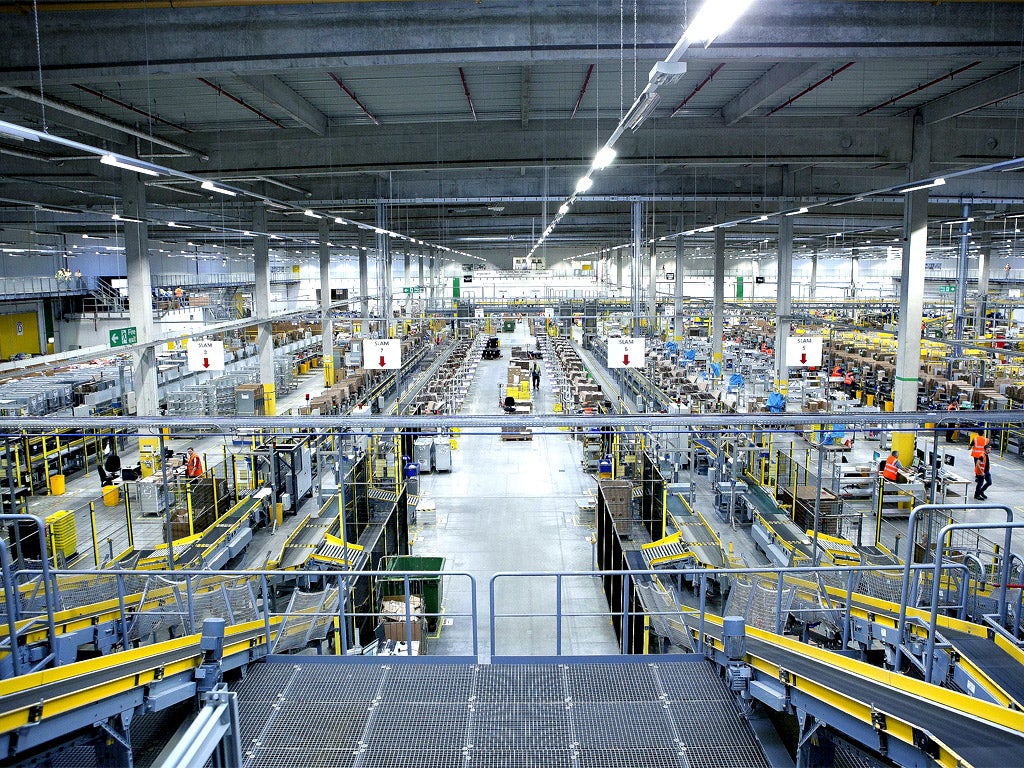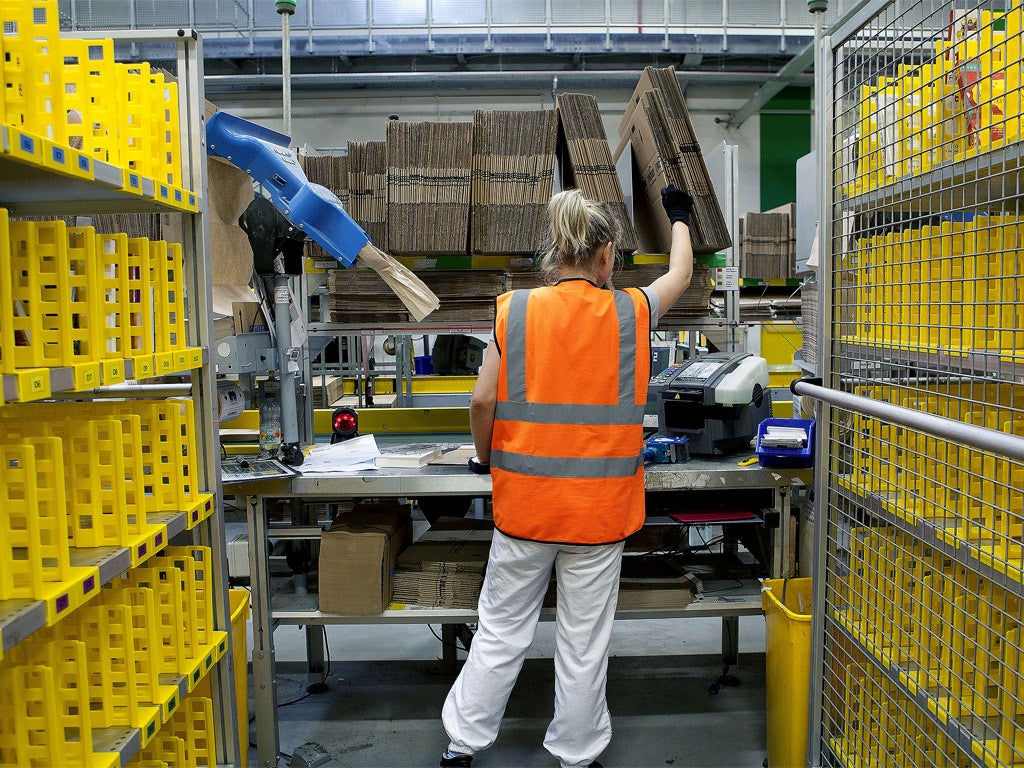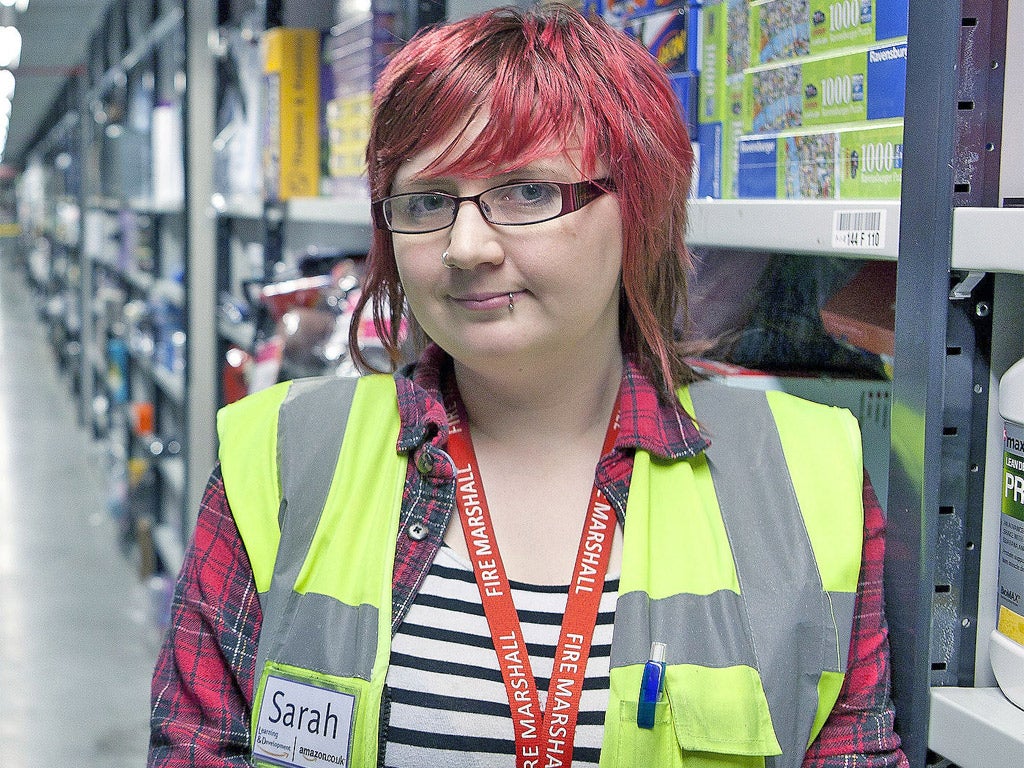The thinking outside the box: The Amazing world of online retail giant Amazon
Fifteen years after its UK launch, the shopping site employs tens of thousands of people in areas where traditional industries have gone under. Simon Usborne takes a browse behind the scenes
Your support helps us to tell the story
From reproductive rights to climate change to Big Tech, The Independent is on the ground when the story is developing. Whether it's investigating the financials of Elon Musk's pro-Trump PAC or producing our latest documentary, 'The A Word', which shines a light on the American women fighting for reproductive rights, we know how important it is to parse out the facts from the messaging.
At such a critical moment in US history, we need reporters on the ground. Your donation allows us to keep sending journalists to speak to both sides of the story.
The Independent is trusted by Americans across the entire political spectrum. And unlike many other quality news outlets, we choose not to lock Americans out of our reporting and analysis with paywalls. We believe quality journalism should be available to everyone, paid for by those who can afford it.
Your support makes all the difference.It is only when browsing the actual – not virtual – shelves of the world’s biggest retailer that the surreal multiplicity of its wares becomes clear. Hello Kitty scooters share space with frying pans, padded guitar bags and tins of Baxter’s luxury lobster bisque. Peppa Pig train sets rest above pepper grinders and jars of gourmet jelly beans. Had you wanted a Puzzle Plush hide-a-squirrel toy for your dog last Thursday morning, I could have told you definitively that there were only three left in stock.
Viewed from a distance, this jumble of goods creates a crazed collage of consumerist Britain. Amazon.co.uk took its first orders 15 years ago this week, three years after a guy called Jeff sold his first book from Amazon.com – then a single computer in his Seattle garage. That the site has turned Jeff (Mr Bezos to you and me) into a billionaire and transformed the way we shop is well known. But how has it changed the lives of its burgeoning workforce – and the former industrial towns in which it prefers to operate?
Amazon, perhaps tentatively, agreed to give me a tour of CWL1 (it has had bad press lately, more of which later), its code for a cavernous warehouse off the M4 between Port Talbot and Swansea in South Wales. It is the second largest of the company’s eight UK “fulfilment centres”, which together employ more than 20,000 “associates” during the Christmas rush.
On 3 December last year – Amazon’s busiest 24 hours – laden lorries left its UK centres at a rate of one every two minutes. The website received 3.5 million orders that day, or 41 every second. Meeting that kind of demand requires sophisticated technology, sweat, and high security. Arriving at the Swansea centre, which is the size of a dozen football pitches, is like visiting a supermax prison. Between the thick steel gates and the entrance to the warehouse floor, a receptionist taps a code into my mobile phone to reveal its serial number. He logs it to ensure it’s the only handset I go home with.
As I head further in, hundreds of staff in hi-viz vests and steel toe-capped shoes are leaving the floor for their 30-minute lunch break. Before they reach the canteen, where a cheese and ham slice looks like the pick of the day, they walk through airport-style scanners and are then given a once-over by a team of guards armed with security wands. Nothing apart from the clothes they wear may pass in or out to ensure nothing is stolen.
The workforce here will peak at 2,500, more than doubling in the next few weeks. Matthew Healy started five weeks ago after a period on job seeker’s allowance. He was given the job of “picker” - the people who grab the stuff you order - and now walks about 10 miles a day. “I pick the larger items,” the 20-year-old says on the floor. “Anything from ironing boards to bags of dog food. It’s good exercise – I’ve already lost more than a stone.”

Matthew was inducted by his older sister, Sarah, who joined three years ago. They commute every day from Aberdare, 25 miles north-east of Swansea Bay, where Amazon arrived five years ago. The village, near Merthyr Tydfil, used to lie at the heart of the region’s coal mining industry. Since its collapse, a growing number of residents have started fuelling a different sort of economy. “There’s not a lot of work there,” Sarah, 25, says. “That’s why I came here but back then there weren’t many people from Aberdare at Amazon. Now we’ve got whole minibuses coming in and car-shares. It’s really helped our community.”
But while Amazon wins with customers – the company topped a poll of Britain’s favourite retailers this week – not everyone is positive about the impact of its mines of the 21st century. As well as facing criticism for its tax arrangements this year, Amazon has been hit by reports of its employment practices and conditions. As Bezos himself told Forbes magazine last year: “Our culture is friendly and intense, but if push comes to shove, we’ll settle for intense.”
Like all temporary staff, Matthew is employed via an agency, without the benefits of permanent staff, and may be released at any stage on a so-called “zero-hour” contract. Ex-employees at the Amazon centre in Rugeley, east Midlands – another former mining town – told Channel 4 News in August that lunch breaks could be as short as 10 minutes because they included the often long walk to and through security. They also claimed holiday pay was not always forthcoming.
In its response, Amazon said all its agencies were contractually obliged to give holiday pay, and drew attention to the large number of its permanent staff who, like Sarah, start in temporary roles before being promoted. At Swansea, Nicola Sweeney, the general manager, says that by the end of the year 1,600 seasonal staff will have taken full jobs. She also insists management responds to staff concerns. The canteen menu has just been smartened up, and work shoes improved.

Before products reach Matthew and his fellow pickers, crates are unloaded from lorries arriving constantly from all over Britain and beyond. Workers scan every item into a giant database and pass them on for stowing. That’s where things get random. To maximise space, any product may be stowed on any shelf. As long as each item is scanned together with the barcode stuck to the shelf, it doesn’t matter that no human could remember where it is – because the central computer will.
As orders come in, the system generates lists of dozens of products according to their locations. Lists are assigned to pickers equipped with trolleys and scanners. Machine then directs man along the most efficient possible route, telling the picker the precise aisle and shelf number for each product. Later, at ranks of packing stations, workers are told which box to reach for according to the stored dimensions of each product. Rolls of brown paper provide cushioning before, finally, robots poised above conveyor belts slap on the address labels. No employee knows which order is destined for which customer.
I bump into a Polish picker in the books department and take a look at his scanner. It says he still has 87 items to pick in the next 44 minutes. Former employees have reported that Amazon penalises those who can’t crack the pace. But my guide insists that nothing bad will happen to the man if he takes, say, 45 minutes to finish his round. “He’ll make it in 44,” she says.
Outside in Port Talbot, the steelworks still dominate the skyline. It used to be the largest employer in Wales, but no more. Now owned by the Indian conglomerate, Tata Group, it cut 600 jobs as recently as last November - by coincidence at the height of Amazon’s recruitment drive. A sculpture called “man of steel” stands on a town square in front of Pizza Hut. He clutches six giant bars of steel. It would not take much to recast them as Amazon deliveries.

The son of a former steelworker who works in a community role but did not want to be named, says Amazon has a mixed reputation in Port Talbot. “My son was taken on there with a view to working ’til after Christmas but they finished him a week before with no notice,” he tells me. “But they’re in a position to do that because of the economic climate. So many other employers have gone from here over the years. This is a poor end of the world and people want to work.”
Employment in and around Port Talbot has remained steady over the past decade or so at 65 per cent, below the Welsh average of 68 per cent and national average of 71 per cent. Swansea has the same level but employment there has declined from 71 per cent in 2004, a pattern familiar in former industrial areas across the country. Increasingly, the only employment available is temporary agency work, often with limited prospects or benefits. This type of work has increased by 20 per cent since the recession started in 2008.
“Clearly those former steel and mining areas have had extensive social and economic challenges for a generation or more,” Steven Phillips, chief executive of Neath Port Talbot County Borough Council, says. But, he adds: “Any employment or strategy by a significant employer that brings jobs to those areas is to be welcomed.”
Back in the warehouse, I meet Fred Dickinson, who at 64 is one of Amazon’s oldest employees. He used to work at a glass factory in Port Talbot until he was made redundant, and for many years in the army before that. He retires next year and won’t hear a bad word about Amazon. It gave his son work before he got a Masters degree and became a software developer, he says. It also gave him an unlikely new taste for a Norwegian delicacy.
“You do see all sorts of products working here,” he tells me. “I was picking some cheese up once, some brown cheese. Caramel it was. So I did try it and it was lovely. It was a bit expensive but I thought, ‘I’ll have a go at this’.”
Where did he buy it? “Where do you think!?”

Amazon stats
The UK site now offers more than 100m products in more than 30 categories.
The company has 6,000 permanent employees in the UK, and is now recruiting more than 15,000 agency workers for the Christmas rush.
Amazon UK’s delivery bill has exceeded £1bn in the past five years.
On 3 December 2012, Amazon.co.uk’s busiest day, a lorry left one of its warehouses on average once every two minutes and 10 seconds. The site received 3.5m orders in those 24 hours, or 41 every second. Two million products were delivered.
Workers, or “associates” can be required to walk up to 15 miles per day while picking products. They are entitled to a 30-minute lunch break during an eight-hour shift. Agency workers may be let go at any time.
£4.2bn Total UK sales last year
Turnover topped £320m
£2.4m Amount Amazon paid in corporation tax last year, out of a total tax bill of £3.2m
£2.5m Amount Amazon received in Government loans last year.
Amazon avoids paying tax on UK sales because it routes them through its European headquarters in Luxembourg, which has low taxes.
Join our commenting forum
Join thought-provoking conversations, follow other Independent readers and see their replies
Comments